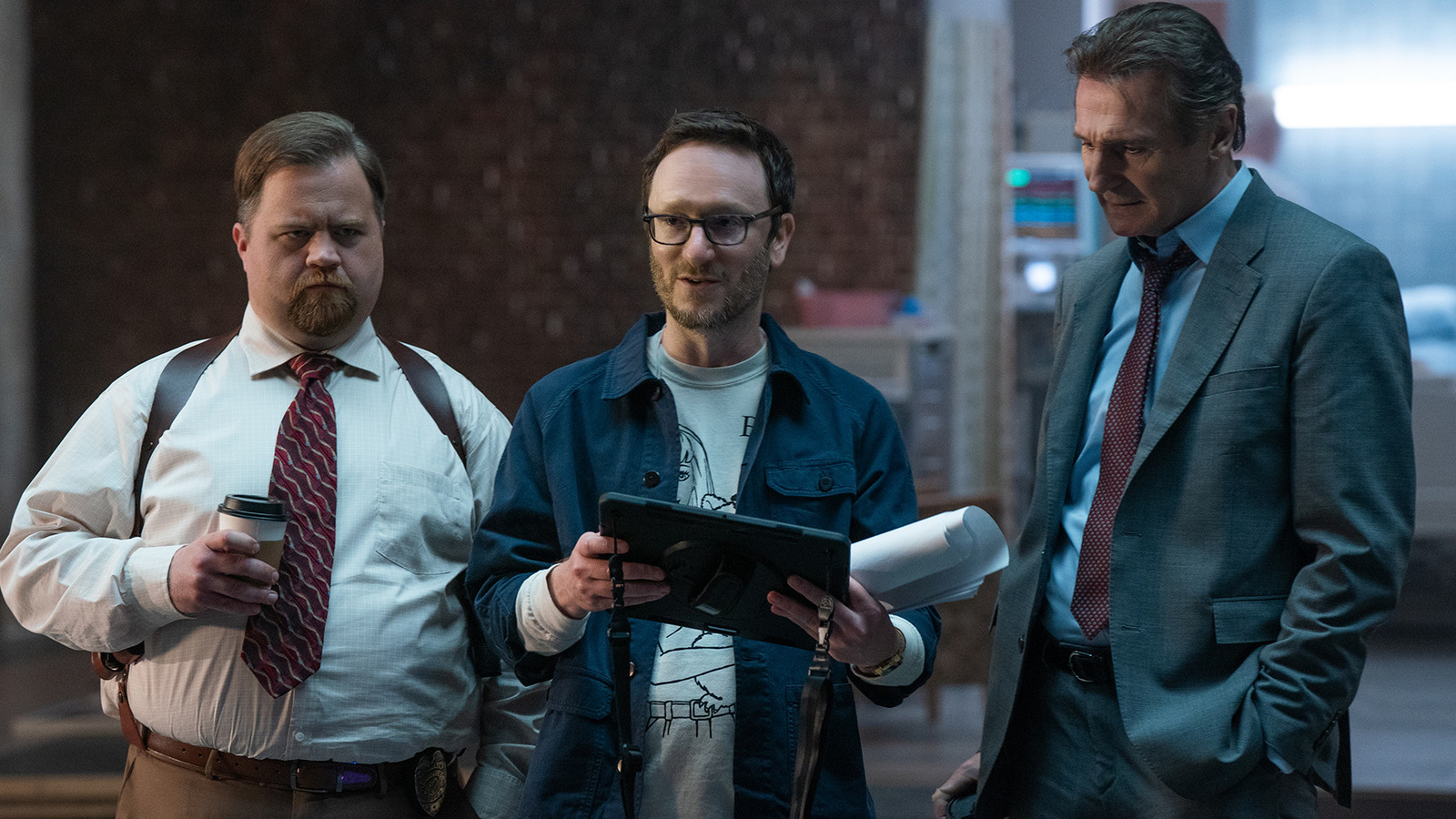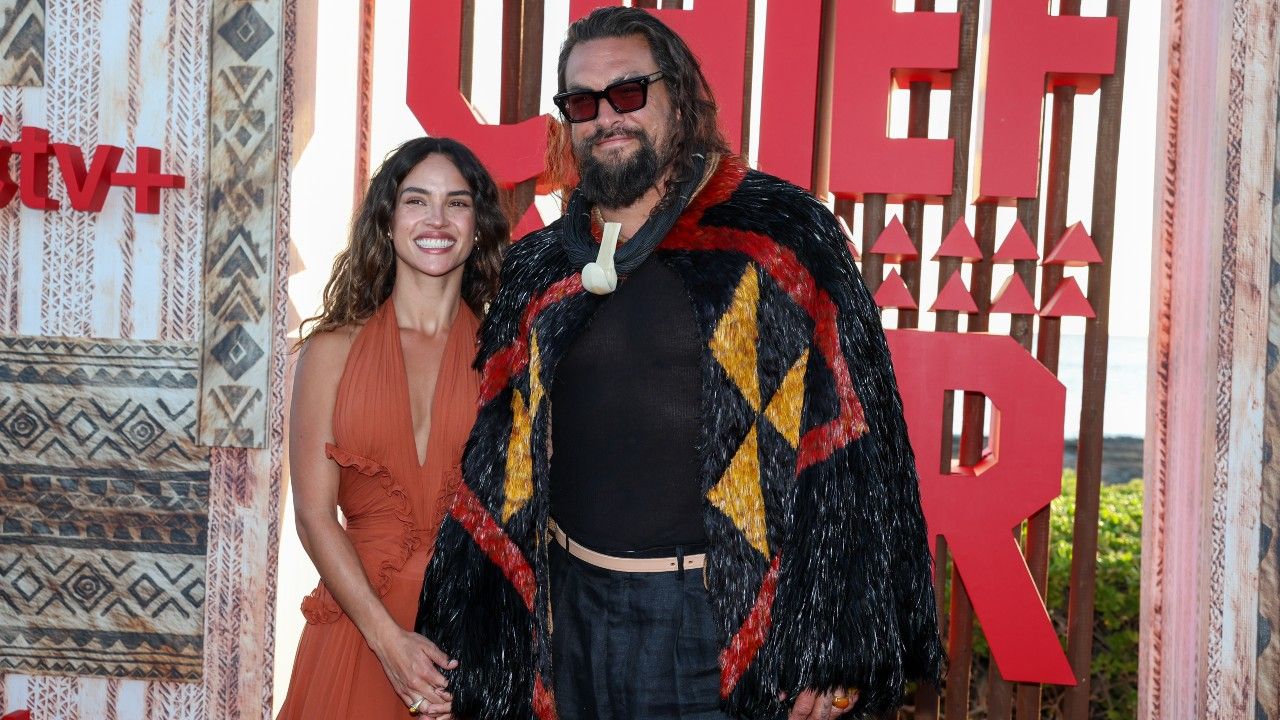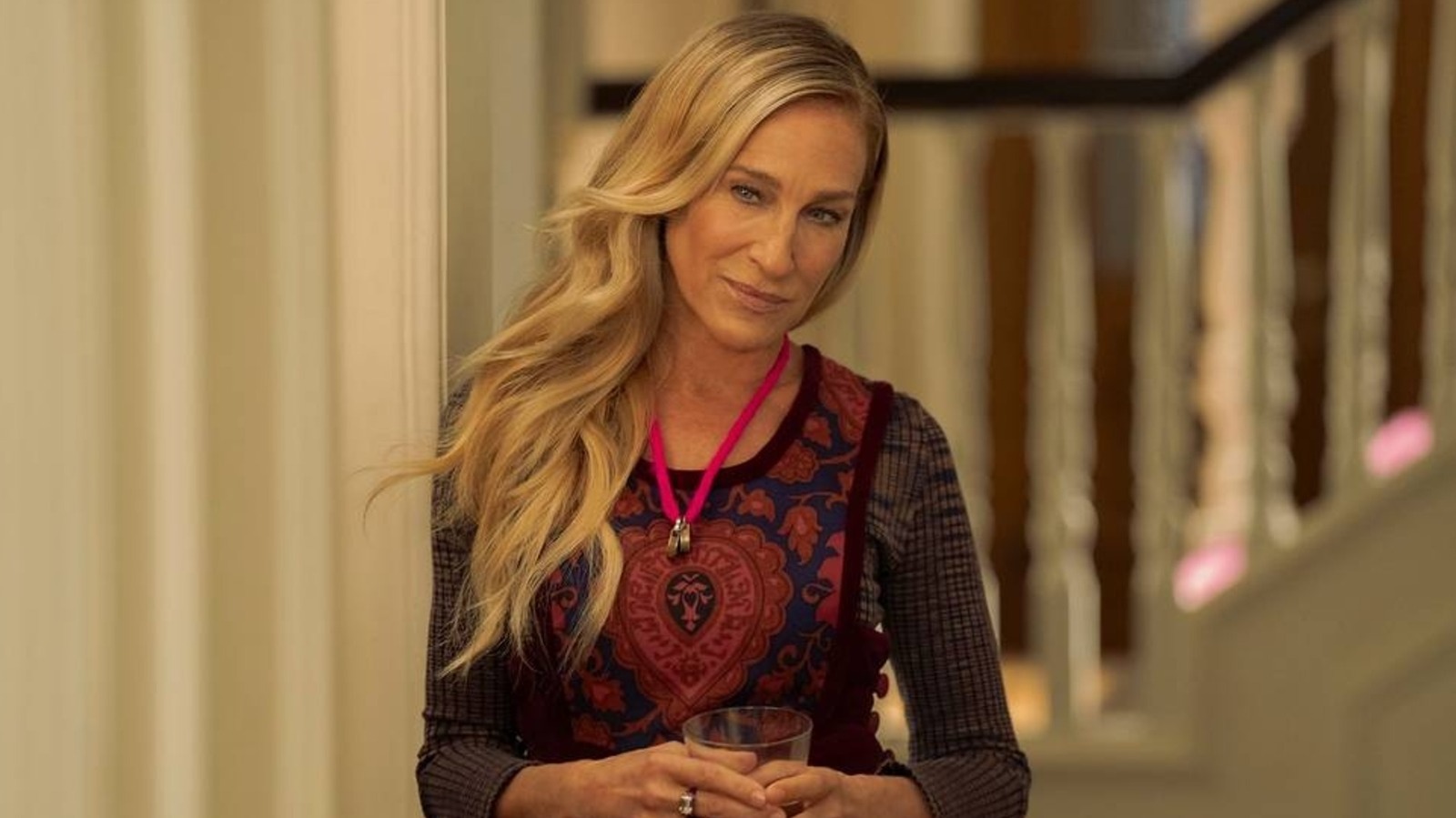
Michael Mando
Matt Winkelmeyer/Getty Images


The Fantastic Four movies from two decades ago ended prematurely.
Ioan Gruffudd starred as Reed Richards/Mister Fantastic in 2005’s Fantastic Four and the 2007 sequel, Fantastic Four: Rise of the Silver Surfer, and with the new Fantastic Four film recently hitting theaters, he’s reflecting on how there was supposed to be a third film in the early ’00s series and why it didn’t happen.
“The mindset was that we were going to do three,” he told Vulture. “I think the second movie was equally successful as the first and equally enjoyable for the fans. I particularly loved working with Doug Jones [as the Silver Surfer] on that movie, who’s just a terrific artist and an expert in the field of movement. If you want to witness somebody bringing a character to life physically, he’s just untouchable.”
He added, “So there was definitely that sort of momentum, and the plan was to do three movies, but these decisions are beyond my control.” The films were distributed by 20th Century Fox.
In the two movies, Jessica Alba portrays Sue Storm/Invisible Woman, Chris Evans is Johnny Storm/Human Torch and Michael Chiklis plays Ben Grimm/The Thing. The late Julian McMahon played villain, Victor von Doom/Doctor Doom. He died last month at age 56.
Elsewhere in the interview, Gruffudd also reminisced on working with co-star Evans and shared his thoughts on the actor’s cameo in Deadpool & Wolverine.
“I absolutely loved working with him. I just remember laughing with Chris every single day on set, almost like giddy teenagers,” he said. “It was a true delight to see Chris reprising Johnny, and that’s such an iconic sequence in that film. I was laughing out loud and just overjoyed by it, and it’s a beautiful homage to what Chris did as Johnny.”
Since then, the superhero team was rebooted for 2015’s bomb The Fantastic Four, which starred Miles Teller, Michael B. Jordan, Kate Mara and Jamie Bell. The Fantastic Four: First Steps, a new iteration, hit theaters on July 25 and stars Pedro Pascal, Joseph Quinn, Vanessa Kirby and Ebon Moss-Bachrach.

Spider-Man: Brand New Day has found a smashing star to join Tom Holland in the Sony/Marvel movie sequel.
Mark Ruffalo is returning to reprise the role of Bruce Banner, aka the Hulk, in the feature, which comes 14 years after the actor joined the MCU in The Avengers. The move had been rumored for a while but only firmed up as the script came together and as production gears up for beginning this month in England.
At the same time, Michael Mando, known for his work on Better Call Saul, is returning to reprise the role of the Scorpion, the villain character whom he first played in Spider-Man: Homecoming, the 2017 feature that kicked off the Holland-centric Spider-Man movies.
Holland’s Spider-Man films have always paired him with a more seasoned actor, such as Robert Downey Jr. (Spider-Man: Homecoming), Samuel L. Jackson (Spider-Man: Far From Home) and Benedict Cumberbatch (Spider-Man: No Way Home), playing key characters Iron Man, Nick Fury and Doctor Strange, respectively. (The movies invoke the tone of classic Marvel comic Marvel Team-Up, a series from the 1970s and 1980s that featured Spider-Man partnering with another hero for an escapade.)
Brand New Day, however, is stacking the deck. Jon Bernthal is also on the call sheet to reprise his role of the vigilante known as the Punisher. It’s the character’s first big-screen appearance in the MCU and first movie appearance in general since 2008 action movie Punisher: War Zone, in which the late Ray Stevenson played the role.
The plot details are being kept under the vest, but you can bet that, in the mighty Marvel manner, Spider-Man, Punisher and Hulk will all fight one another before figuring out who the real bad guys are.
Sony and Marvel had no comment.

Michael Mando
Matt Winkelmeyer/Getty Images
Destin Daniel Cretton is directing the feature that has regular Spider-Man scribes Chris McKenna and Erik Sommers writing the script. Brand New Day has a release date of July 31, 2026.
Ruffalo has appeared in numerous Marvel projects, including Avengers: Age of Ultron, Thor: Ragnarok, Avengers: Infinity War and Avengers: Endgame. He most recently appeared in the Disney+ TV series She-Hulk: Attorney at Law and had a cameo in Cretton’s Shang-Chi and the Legend of the Ten Rings.
Mando was a key character in all six seasons of Saul, playing the complicated drug dealer Nacho Varga. Mando also appeared in sci-fi series Orphan Black.
Ruffalo is repped by UTA and Lighthouse Management and Media, while Mando is repped by UTA and Underground.


All right, so I wanna get specific. I talked to Dan Gregor and Doug Mand about the Snowman’s Cottage sequence, which is just like a showstopper of a sequence. I was laughing so hard at that. I know that you said that the idea just kind of popped into your head early one morning, but I was curious if there were any other drastically different versions of that scene before you had that idea and what they were like?
That’s a great question. We definitely wrote some other montages, but I do not recall what they were. They were fine, but none of them felt different enough. Not different enough from the old “Naked Gun” one but just different enough from all of the making fun of montages that have happened in the last 30 years. It is well-worn territory. The first “Naked Gun” one is classic, and then there’s so many others. The one that always comes to mind is like “Team America,” “You need a montage.” Like, once they have the song talking about it, they’ve really broken it. I wish I do remember, but I don’t remember the other ones. There was no debate. Once I wrote that one, we were all like, “Good.”
The one final bit that I wanna talk about is the TiVo bit, which feels so personal and specific, and it just comes out of nowhere. What was the inception of that?
It’s so funny ’cause in some of these interviews, I talk a lot about momentum and how the movie just had to move, and how if a joke didn’t work, I would always cut it. Even things that went further, like sometimes we’d cut the last beat off if it climaxed at one part. Then when it gets to the “Buffy” joke, it’s indefensible. That’s just me.
It’s the only joke that’s still makes me laugh. I’ve seen the movie a thousand times, scrutinized every frame. It’s all just like ones and zeros to me now of color and sound and mix. None of it makes me laugh anymore. That joke still makes me laugh every time. It was always polarizing. Half the audience would be like, “Do not touch it. It’s the best joke in the movie.” And half the audience would be like, “Get that out of here. I don’t even have a clue what that was.”
It’s so good. Especially the silence there, when he’s like, “Hold on,” and he’s hooking it up and waiting for it to boot up.
Yeah, “Just stand there. Just stand there.” I think even for people who don’t love it, if they watched the movie another time or two more times now knowing it, I think it will become their favorite joke.
That’s how much I believe in it.
I had to tell Liam, “No, I know that one doesn’t — It only plays for half the audience.” It’s just my favorite and I like that we don’t explain it. I think there’s a lot of people also that by the time he’s in the […], when he’s in the cab, after the cab ride, and he’s got the TiVo, there’s people that laugh there and I go like, “I think there’s some people that are just watching it trying to figure out where it’s going and what it is as a joke, because I don’t recognize its format from anything.” It’s Liam’s performance that kills it.
Absolutely.
He’s just so dedicated. So, I think those people then will be laughing from the beginning the next time. You know what I mean? But I have to admit, it was self-indulgent. I know.
“The Naked Gun” is playing in theaters now.


Mark your calendars, because moviegoers will get to hear: “May the Force be with you” in theaters once again.
Star Wars: Episode IV – A New Hope, which kicked off the legendary trilogy and franchise, is heading back to theaters just in time for its 50th anniversary. Lucasfilm owner Disney has confirmed a theatrical release is set for April 30, 2027.
A New Hope originally hit theaters on May 25, 1977 and starred Mark Hamill as Luke Skywalker, Harrison Ford as Han Solo and the late Carrie Fisher as Princess Leia. And the film saw the introduction to one of the most iconic villains of all time, Darth Vader (physically played by David Prowse, with James Earl Jones providing the voice).
Created by George Lucas, the franchise expanded into the early 2000s with prequel films starring Natalie Portman, Hayden Christensen and Ewan McGregor. The sequels began with 2015’s Star Wars: The Force Awakens, featuring Daisy Ridley, John Boyega, Oscar Isaac, Adam Driver and many other spinoffs and TV series.
Last year at Cannes, Lucas spoke about how his original ideas for Star Wars “sort of got lost” after the 2012 Disney deal. Notably, 2018’s Solo: A Star Wars Story struggled at the box office.
“I was the one who really knew what Star Wars was … who actually knew this world, because there’s a lot to it. The Force, for example, nobody understood the Force,” Lucas said. “When they started other ones after I sold the company, a lot of the ideas that were in [the original] sort of got lost. But that’s the way it is. You give it up, you give it up.”
However, a highly anticipated upcoming project in the franchise is Shawn Levy’s Star Wars: Starfighter, starring Ryan Gosling. That film is also set to hit theaters in 2027, on May 28 of that year.

It’s been three years since Jason Momoa and Lisa Bonet got divorced, but when one door closed, another opened for the Aquaman actor. After going Instagram official with his new girlfriend, Adria Arjona, last year, we caught a cute glimpse of what Momoa’s new love life is like with motorcycles obviously involved.
Life is good for Jason Momoa. His latest series, Chief of War, just premiered (which is streaming on your Apple TV+ subscription), and the Hawaiian native just turned 46. But we can’t forget his new relationship with his Sweet Girl co-star, Adria Arjona, and they look like a picture-perfect couple. If you want to know how photogenic the pair is, the Hit Man actress posted a birthday carousel of Instagram pics of her and her BF. Naturally you’ll find motorcycles making a cameo in them:
Top Gun movies and Roman Holiday can make motorcycle outings look romantic, so can Momoa.
Even when the Fast X actor got into a motorcycle accident in 2022, his motorcycle obsession never died. As the two-wheeled vehicles have played a role in his friendship with Lenny Kravitz and spread his obsession onto actor Josh Brolin, it’s no surprise motorcycles would find their way into Jason Momoa’s new romance as well.
After Momoa’s marriage to Lisa Bonet deteriorated, the talented actor was trying to find love in new places. He was reportedly dating Eiza González after his split, but they apparently broke up with a source claiming, “they are in different life stages.” But as People’s insider put it, the two were allegedly not “very serious.” So maybe the Baywatch actor wasn’t in the right place at the time for a serious relationship. This time around, perhaps Adria Arjona could be the one.
Jason Momoa and Adria Arjona have been keeping their relationship private for the most part, but when they go public, you can’t help but gush. The pair looked like they had a lot of fun attending SNL’s 50th Anniversary and even made his scrunchie match his girlfriend’s dress when they were both at A Minecraft Movie’s premiere. Can they be any more adorable?
There’s nothing like Jason Momoa taking his new girlfriend out on a wild ride with a romantic motorcycle outing. I think the three could have something very beautiful together if the two-wheeler potentially contributes to many dates. Make sure to watch Momoa in Chief of War on your streaming schedule now.

Deadline confirming the news. “And just like that… the ongoing storytelling of the ‘Sex and the City’ universe is coming to an end,” it read. “While I was writing the last episode of ‘And Just Like That…’ season 3, it became clear to me that this might be a wonderful place to stop.” King then explained that he, executive producer and star Sarah Jessica Parker, head of HBO Max content Casey Bloys, and head of HBO Max originals Sarah Aubrey made the decision to include 12 episodes (increased from the usual 10) in the third season, with the added two serving as a two-part series finale.
“[Parker] and I held off announcing the news until now because we didn’t want the word ‘final’ to overshadow the fun of watching the season,” King then clarified. “It’s with great gratitude we thank all the viewers who have let these characters into their homes and their hearts over these many years.”
So, is the show canceled? Not technically. HBO Max didn’t pull the plug on the series, which Is unsurprising when you consider that “Sex and the City” is one of the premium network’s flagship shows. It could come back to terrorize audiences once again, but not any time soon, I guess! So, uh, what’s going on in this series in the first place, and why does it deserve to go away and never come back?
Set years after the original “Sex and the City” and the two middling-to-terrible movies that followed, “And Just Like That…” reunites fans with Carrie Bradshaw (Sarah Jessica Parker), Charlotte York-Goldenblatt (Kristin Davis), and Miranda Hobbes (Cynthia Nixon), minus Kim Cattrall’s Samantha Jones. (Cattrall refused to participate in the project aside from one presumably costly cameo in the season 2 finale.) After killing John “Mr. Big” Preston (Chris Noth) with a rogue Peloton exercise bike in the series premiere, the show watches as Carrie embraces life in New York again.
If I tried to talk about every silly and frankly incomprehensible thing that happened on “And Just Like That…,” I’m afraid we’d be here all day or, honestly, maybe all week. There was the Che Diaz of it all, meaning that “Grey’s Anatomy” veteran Sara Ramirez’s stand-up comedian character was so thoroughly mocked by audiences that the series wrote them off after the end of season 2. Elsewhere, Charlotte’s storylines range from “her beloved husband has cancer” to “she has vertigo and keeps falling over,” while Miranda’s sexual awakening isn’t totally unsurprising — the woman wears a suit to a club in the first season of “Sex and the City,” for god’s sake — but it destroys her on-screen love Steve Brady (David Eigenberg) in the process and, until recently, presented her with a smorgasbord of terrible romantic options. (Her current girlfriend as of this writing, Dolly Wells’ Joy, is a great match for Miranda, finally.) The show is a mess, but it’s at least a fun mess.
With only two episodes left to air as of this writing, there’s not much story left for “And Just Like That…” to even tell. That’s fine. This show can go straight to jail without passing go or collecting $200. I’ll explain.
My deep and unabiding hatred of “And Just Like That…” is well-documented at this point here on /Film (though, to be incredibly fair, I hate “Emily in Paris” a lot more). The truth is, “And Just Like That…” never had any reason to exist in the first place. The ending of “Sex and the City” is imperfect but largely fine, and even though the original series was really focused on the friendship between Carrie, Miranda, Samantha, and Charlotte — in a memorable moment, Charlotte asks the girls if maybe they’re each other’s real soulmates — the movies and “And Just Like That…” both put romantic relationships front and center in a way that feels untrue. Everyone on “And Just Like That” is either a weird caricature of their long-running character — poor Cynthia Nixon does some truly deranged nonsense as the once-sensible Miranda — or a weird caricature in general, as is the case with, I don’t know, every single individual under 40. (In “Better Than Sex,” a Gen Z-coded character reveals that she chose to keep an unexpected pregnancy only because the baby would be a “double Libra.” Nobody has ever talked like this, but whatever.)
Weirdly, though, I’ll miss this show. I’ll miss settling in for a weekly hate-watch that probably sends my blood pressure through the roof. I’ll miss texting my friends stuff like “Why are we talking about deodorizing armpit crystals two weeks in a row?!?!” I’ll miss Carrie’s bizarre sartorial choices that range from “pirate wench lost in New York” to simply “enormous hat.” Again, “And Just Like That…” never had any real purpose in this world, but it led to a lot of truly wild discourse, left us with some genuinely incredible memes, and gave gleeful hate-watchers like me around the world something to really sink our teeth into. Go gently into this good night, “And Just Like That…” — and may you never, ever come back.
Oh, “And Just Like That…” is streaming on HBO Max, and the two-part finale airs on June 7 and June 14, 2025, at 9 P.M. EST.